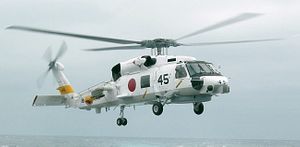While tensions in the South China Sea continue to heat up between China and the other claimants, the China-Japan dispute over the Senkaku/Diaoyu Islands in the East China Sea remains relatively cool. As The Diplomat has noted recently, China and Japan are in the middle of a slow-but-sure thaw in the area and are looking to finalize a bilateral liaison mechanism to manage maritime crises and prevent unintentional escalation.
Diplomatic momentum toward a bilateral consultative mechanism began in 2012, but was derailed by a general rise in tensions over the disputed islands in 2013. The dispute reached a tipping point when China unilaterally declared an air defense identification zone (ADIZ) over disputed waters in the East China Sea in November 2013. Since January 2015, however, the overall process has been constructive.
This week, reports emerged that the maritime liaison mechanism between the two governments will exclude territorial waters and territorial airspace. The primary effect of this provision will be that the disputed islands will be excluded from the crisis management mechanism. The exclusion will be noted in a written agreement, and Japan and China are expected “to start operating the mechanism this summer at the earliest,” according to the Yomiuri Shimbun.
It was always likelier than not that a finalized consultative mechanism would exclude the Senkaku/Diaoyu Islands, since including those as part of a mechanism would necessitate a conversation on the dispute itself. Japan continues to maintain that there is no dispute with China over the islands.
The 2015 resumption of bilateral talks between the two countries on the consultative mechanism is also taking place with an acknowledgment of last fall’s four-point consensus document, in which the two countries acknowledged their political difficulties over the issue. In that document, China and Japan “acknowledged that different positions exist between them regarding the tensions which have emerged in recent years” over the disputed islands.
That proved to be a face-saving position for China, which could enter a period of warmer relations with Japan after over 18 months of rising tensions in the East China Sea.
At this point — based on the territorial waters and airspace exclusion provision — both Japan and China would react to forces from the other country entering their waters within the rubric of their domestic law. For Japan, this means that if Chinese aircraft, ships, or even drones entered airspace over the Senkakus, Japan would continue its status quo policy of scrambling jets or ordering its coast guard to approach the vessels.
In theory, the liaison mechanism should be a preventative tool, ensuring that neither side would be caught off guard by incursions into territorial waters and airspace. According to the Yomiuri’s June 15 report, the “mechanism will be operated mainly when there are situations in the exclusive economic zones — which are within 200 nautical miles (about 370 kilometers) from shores — and in the air defense identification zones (ADIZs, see below) over high seas and near territorial airspace.”
The two governments have their sights set on concluding this consultative mechanism on maritime crisis management by the end of this year. The conclusion of this mechanism will go a long way toward preventing unintended escalation in the East China Sea, creating an atmosphere for constructive bilateralism between Tokyo and Beijing.
































